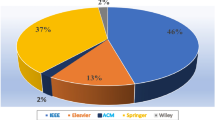Abstract
Though IP multicast is resource efficient in delivering data to a group of members simultaneously, it suffers from scalability problem with the number of concurrently active multicast groups because it requires a router to keep forwarding state for every multicast tree passing through it. To solve this state scalability problem, we proposed a scheme, called aggregated multicast. The key idea is that multiple groups are forced to share a single delivery tree. In our earlier work, we introduced the basic concept of aggregated multicast and presented some initial results to show that multicast state can be reduced. In this paper, we develop a more quantitative assessment of the cost/benefit trade-offs. We propose an algorithm to assign multicast groups to delivery trees with controllable cost and introduce metrics to measure multicast state and tree management overhead for multicast schemes. We then compare aggregated multicast with conventional multicast schemes, such as source specific tree scheme and shared tree scheme. Our extensive simulations show that aggregated multicast can achieve significant routing state and tree management overhead reduction while containing the expense of extra resources (bandwidth waste and tunnelling overhead). We conclude that aggregated multicast is a very cost-effective and promising direction for scalable transit domain multicast provisioning.
Similar content being viewed by others
References
K. Almeroth, The evolution of multicast: From the MBone to inter-domain multicast to Internet2 deployment, IEEE Network (January/February 2000).
A. Ballardie, Core Based Trees (CBT version 2) multicast routing: Protocol specification, IETF RFC 2189 (September 1997).
A. Ballardie, P. Francis and J. Crowcroft, Core Based Trees (CBT), in: Proceedings of ACM SIGCOMM (September 1993) pp. 85–95.
R. Boivie, N. Feldman, Y. Imai, W. Livens, D. Ooms and O. Paridaens, Explicit multicast (Xcast) basic specification, Internet draft: draft-ooms-xcast-basic-spec-01.txt (March 2001).
B. Cain, S. Deering, B. Fenner, I. Kouvelas and A. Thyagarjan, Internet Group Management Protocol, version 3, Internet draft: draft-ietf-idmr-igmp-v3-07.txt (March 2001).
Y. Chu, S. Rao and H. Zhang, A case for end system multicast, in: Proceedings of ACM Sigmetrics (June 2000).
L.H.M. Costa, S. Fdida and O.C.M. Duarte, Hop-by-hop multicast routing protocol, in: Proceedings of SIGCOMM’01 (August 2001).
J. Crowcroft, Multicast address translation, Internet draft: draft-crowcroft-mat-00.txt (November 2001).
S. Deering, Multicast routing in a datagram internetwork, Ph.D. thesis (December 1991).
S. Deering, D. Estrin, D. Farinacci and V. Jacobson, Protocol Independent Multicast (PIM), Dense mode protocol: Specification, Internet draft (March 1994).
S. Deering, D. Estrin, D. Farinacci, V. Jacobson, C. Liu and L. Wei, The PIM architecture for wide-area multicast routing, IEEE/ACM Transactions on Networking 4(2) (April 1996) 153–162.
D. Estrin, D. Farinacci, A. Helmy, D. Thaler, S. Deering, M. Handley, V. Jacobson, C. Liu, P. Sharma and L. Wei, Protocol Independent Multicast – Sparse Mode (PIM-SM): Protocol specification, IETF RFC 2362 (June 1998).
A. Fei, J.-H. Cui, M. Gerla and M. Faloutsos, Aggregated multicast: An approach to reduce multicast state, in: Proceedings of 6th Global Internet Symposium (GI2001) (November 2001).
A. Fei, J.-H. Cui, M. Gerla and M. Faloutsos, Aggregated multicast with inter-group tree sharing, in: Proceedings of NGC2001 (November 2001).
P. Francis, Yoid: Extending the internet multicast architecture, http://www.aciri.org/yoid/docs/index.html.
M. Handley et al., Bi-Directional Protocol Independent Multicast (BIDIR-PIM), Internet draft: draft-ietf-pim-bidir-03.txt (June 2001).
H. Holbrook and D. Cheriton, IP multicast channels: EXPRESS support for large scale single-source applications, in: Proceedings of SIGCOMM’99 (September 1999).
S. Kumar, P. Radoslavov, D. Thaler, C. Alaettinoğlu, D. Estrin and M. Handley, The MASC/BGMP architecture for inter-domain multicast routing, in: Proceedings of ACM SIGCOMM’98 (September 1998) pp. 93–104.
J. Moy, Multicast routing extensions to OSPF, RFC 1584 (March 1994).
C. Partridge, D. Waitzman and S. Deering, Distance vector multicast routing protocol, RFC 1075 (1988).
D. Pendarakis, S. Shi, D. Verma and M. Waldvogel, ALMI: An application level multicast infrastructure, in: Proceedings of 3rd Usenix Symposium on Internet Technologies and Systems (USITS 2001) (March 2001).
P.I. Radoslavov, D. Estrin and R. Govindan, Exploiting the bandwidth-memory tradeoff in multicast state aggregation, Technical report, USC Department of CS Technical report 99-697 (2nd revision) (July 1999).
SENSE: Simulation Environment for Network System Evolution, http://www.cs.ucla.edu/NRL/hpi/resources.html (2001).
I. Stoica, T. Ng and H. Zhang, REUNITE: A recursive unicast approach to multicast, in: Proceedings of IEEE INFOCOM’00, Tel Aviv, Israel (March 2000).
D. Thaler and M. Handley, On the aggregatability of multicast forwarding state, in: Proceedings of IEEE INFOCOM (March 2000).
J. Tian and G. Neufeld, Forwarding state reduction for sparse mode multicast communications, in: Proceedings of IEEE INFOCOM (March 1998).
Author information
Authors and Affiliations
Rights and permissions
About this article
Cite this article
Cui, JH., Kim, J., Maggiorini, D. et al. Aggregated Multicast – A Comparative Study. Cluster Comput 8, 15–26 (2005). https://doi.org/10.1007/s10586-004-4433-8
Issue Date:
DOI: https://doi.org/10.1007/s10586-004-4433-8




